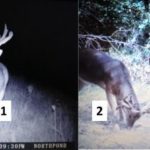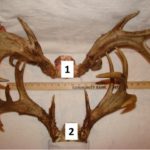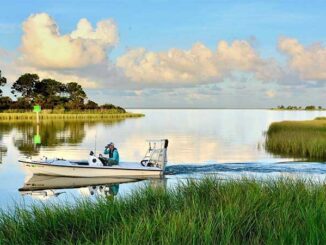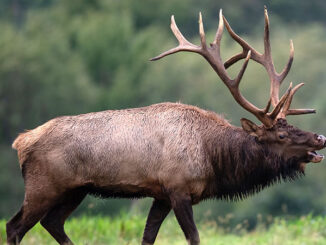
Many readers of Happy Trails no doubt also read my additional article last month in the January issue of Mississippi Sportsman titled Hinds County Hunter Bags Monster Buck. Well, there is a little more to that story than what you read on those pages.
While most of us whitetail hunters have marveled at photos of bucks with non-typical antlers, a very tiny fraction of our ranks have ever actually seen, much less harvested, a high-end non-typical rack.
What I am talking about here is one of those freak-nasty, gnarly, palmated sets of whitetail head gear that reminds one of a cross between a moose and a picket fence.
In this particular case the monster whitetail buck featured last month had been given the moniker “Drop Tine” by the hunters who had been watching it over the past couple of years, primarily by trail camera.
My friend Jody Sistrunk’s persistence and patience paid off on Dec. 7 when he was lucky enough to have his stand choice coincide with Drop Tine’s travel route that particular day.
This is where we will pick the story back up and I tell you about Drop Tine’s apparent twin brother.
Now let’s be frank, they were obviously not perfectly identical twins, but fraternal is good enough for me when it comes to bucks of this caliber.
As Jody followed the comings and goings of Drop Tine during the preseason by trail camera, he quickly took note that a second buck with a distinctly palmated rack was often in the same trail-camera photo frame as Drop Tine. Both bucks appeared to be the same age, and their unusual racks had many similarities, with the exception that Drop Tine’s rack was noticeably larger, and had a drop point on the right main beam.
I have marked both bucks with numbers in the accompanying photos. Drop Tine is identified as No. 1, and its twin is identified as No. 2.
Seeing the two racks lying side-by-side in the adjacent photo would lead you to believe that Jody harvested both bucks, but that is not the case.
Ole Drop Tine was reduced to capture by courtesy of the Nosler bullet company, but its apparent twin brother unfortunately met its demise courtesy of the Chevrolet Motor company.
About two weeks before Drop Tine was taken by Jody, the big deer’s oftentimes companion leaped off of a bank from behind a cedar tree into the gravel road one day at their lease going full tilt and was hit by a farm hand’s pickup truck.
As a result, Jody was able to get both racks in his possession, and a comparative study of the two was made.
Body wise, they appear to be the same age, and before the prerut were usually seen running together.
After harvest, Drop Tine’s jaw bone age was pegged at a solid 3 years old by biologist Jim Lipe, who helps manage the harvest quotas for Jody and his partner’s hunting property in Central Mississippi.
This was a stunning revelation, as Jim had pegged the deer as a 4-year-old from the photos and recommended that it be put on the “target list.” They try and limit their annual buck harvest to mature 4-year or older bucks, plus designated cull bucks.
Unfortunately, the jaw bone was not saved for age confirmation purposes for the pickup truck killed “twin.”
The side-by-side comparative photo readily shows how similar the two racks are, in spite of the “twin” lacking a drop tine and not having as many overall inches of bone.
The dictionary definition of “palmate” is “having a shape similar to that of a hand with the fingers extended.” Although many forms of non-typical antler are the result of physical injury or trauma to either growing velvet antlers or a major skeletal body structure, true palmation is thought to be a characteristic inherited from the buck’s parents.
Palmated antlers that are “webbed” like a moose, such as what we see here in Drop Tine and its “twin” are almost certainly genetically inherited.
Regarding the production of drop tines, their occurrence appears also to be mostly of genetic origin. Whereas most deformed antlers, especially when only one antler is affected, result from some form of physiological problem brought on by injury, genetic deformities typically occur on both antlers and repeat year-to-year.
One of the most-interesting things about whitetail buck antlers is their diversity of size, texture and shape. Whitetail deer, as a species, have a basic antler shape and pattern that most individuals in a given population will resemble, but among our ranks as hunters there is constant discussion about antler abnormalities that we call non-typical.
The various abnormalities that can occur include such things as drop tines, kickers, forks, crab claws, webbing, palmation, extra beams, double brows, and any number of other “trash,” as some folks affectionately call them.
In my view, though, we should start referring to them as “goodies,” since we never seem to complain when they occur on a buck’s antlers that we have just taken.



